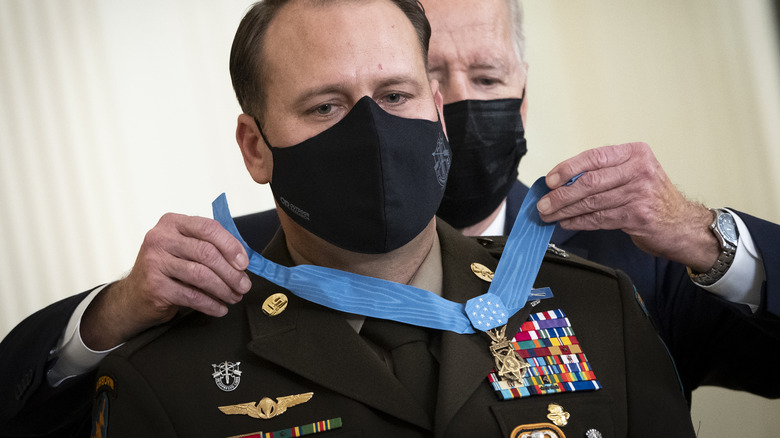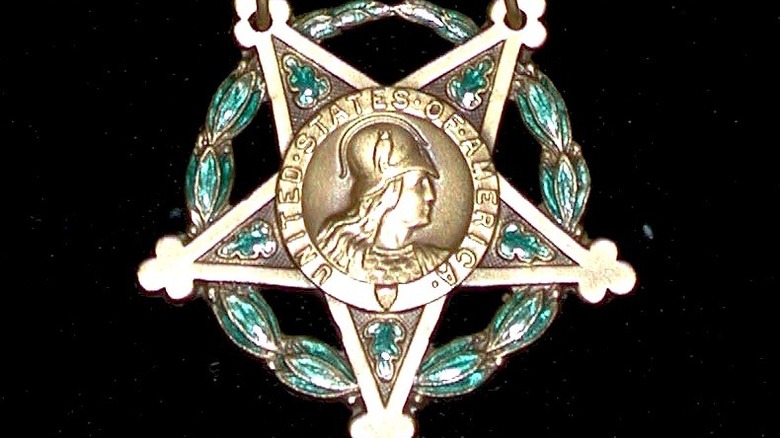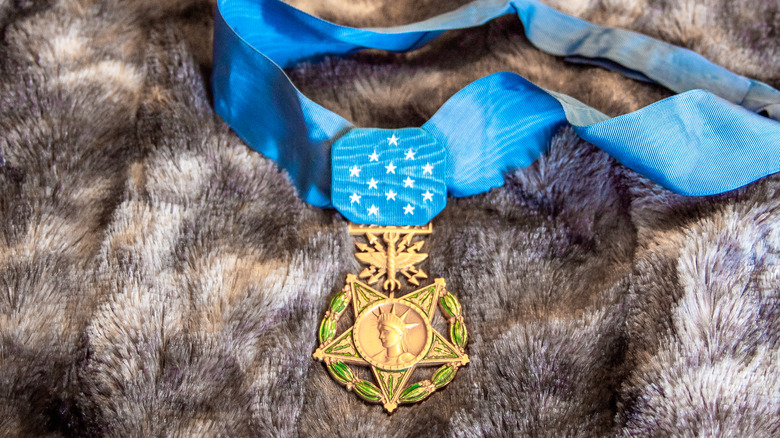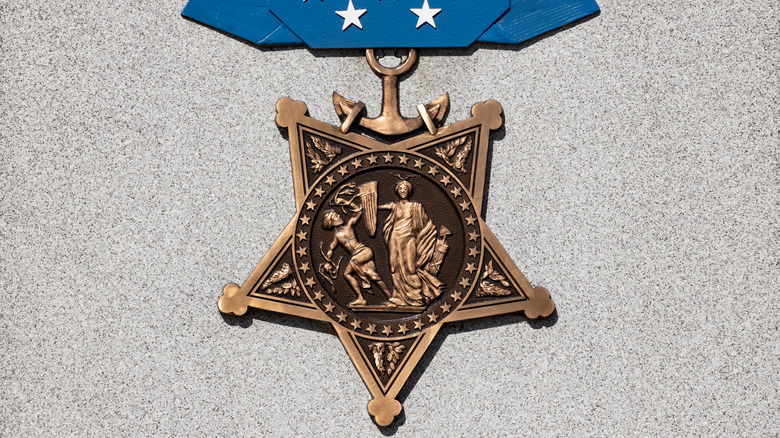The Three Different Medal Of Honor Designs Explained
For over 150 years, according to History, the president, with the approval of Congress, has been awarding the Medal of Honor to individuals who, as the Defense Department describes it, "distinguish themselves through conspicuous gallantry and intrepidity at the risk of life above and beyond the call of duty," while serving in an armed conflict. It's the highest honor given by the military, and as of July 2022, according to a website dedicated to the medal and its recipients, the honor has been bestowed upon 3,511 people, 63 of whom are still living. One of the most recent winners, according to the Army, was Sgt. 1st Class Christopher A. Celiz, who repeatedly "placed himself in extreme danger" by drawing enemy fire in order to buy time for his colleagues, giving his life in the process, during a battle in Afghanistan in 2018.
Eight civilians have also received the honor, all in the 19th century, including the only woman so far (per We Are the Mighty). There are three versions of the medal, according to the honor's website – one for the Army, one for the Air Force, and one shared by the Navy, Marines, and Coast Guard.
The Army Medal Of Honor
The Army's Medal of Honor (depicted above) dates back to 1862, according to History, the first recipients being a group of six Union soldiers who penetrated deep into enemy territory during the Civil War and destroyed bridges and railroad tracks between Chattanooga and Atlanta.
The current iteration of the medallion is described by the Smithsonian as "A gold five pointed star, each point tipped with trefoils, one and a half inches wide, surrounded by a green laurel wreath and suspended from a gold bar inscribed 'VALOR', surmounted by an eagle." According to a website dedicated to the medals, the Army's medallion contains a circle of laurel leaves, added in 1904, to serve as a symbol of victory. The helmeted figure in the middle is Minerva, the Roman goddess of wisdom and war, the words "United States of America" surrounding her. Green, leaf-like clusters in each of the five points of the star represent strength.
The Air Force Medal of Honor
The Air Force Medal of Honor (pictured above) is younger than its Navy/Marine Corps/Coast Guard and Army counterparts, having been established in 1965, according to Medal of Honor Convention. The first recipient was Major Bernard Fisher, who received it in 1967 for heroism during the Vietnam War.
It's about 50% larger than its counterparts, but otherwise retains the same general structure, including the word "VALOR" above the rest of the insignia. Where the Army's version has an eagle above the word, according to the medal's website, the Air Force version features lightning bolts, derived from the branch's coat of arms, below the word. It also has the same circlet of laurel leaves as the Army's medal, and green oak leaves in the star's points, representing strength. The Statue of Liberty replaces the crowned Minerva, and she is surrounded by 34 stars — the number of stars on the U.S. flag in 1862.
The Navy, Marine Corps, and Coast Guard Medal
The Navy Medal of Honor (pictured above) is the oldest of the three medals, according to Medal of Honor Convention, established in 1861 and, at first, available only to enlisted men but later extended to officers as well (per the Naval History and Heritage Command). According to a website dedicated to the Medal of Honor, the first recipient was Robert Benton, who earned the medal through heroism during the Civil War.
The Navy's version, also used by the Marine Corps and the Coast Guard, is fundamentally different from its counterparts in that it lacks the word "VALOR," and in that its pendant hangs from an anchor. According to another Medal of Honor website, the goddess Minerva appears again, this time fighting a man clutching snakes, with an owl, representing wisdom, perched on her helmet. In her left hand are a bundle of rods and an ax blade, symbolizing authority; in her right, a shield, representing the union of the states. The states are also represented by the 34 stars, representing the number of stars on the flag/states of the union in 1862. Like its Army and Air Force counterparts, the Navy medal also includes leaves in each of the five points of its star, representing victory and strength.



